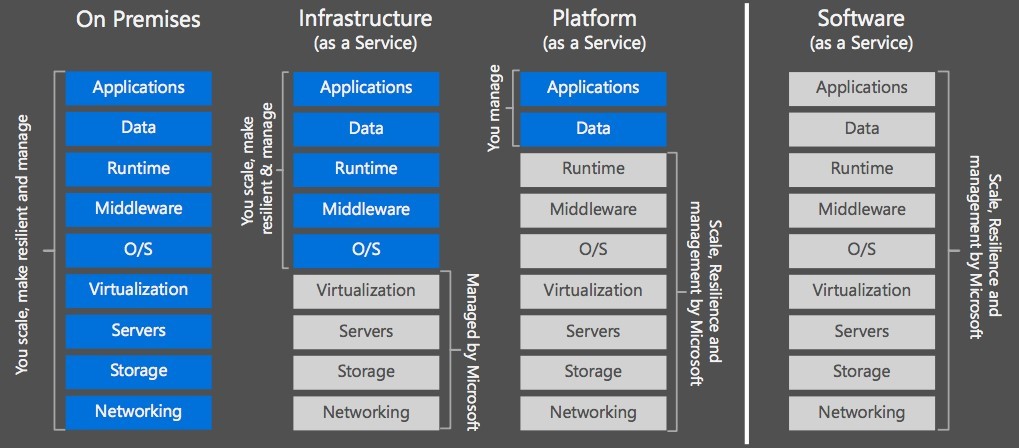Article How Windows Virtual Desktop changes the service provider business
Lower costs, new opportunities

Door Insight Editor / 17 Sep 2019 / Onderwerpen: Virtualization
From 2000 there has been a growing awareness among IT that hosting applications in expensive data centers on location is becoming less important. What comes instead? Delivering smart solutions for collaboration, for working efficiently and working safely. Ownership of infrastructure, services and applications is no longer standard; you buy them when you need them. We have come to a new form of IT, with cloud technology as a beating heart. Microsoft has been anticipating this for years and is now taking the next step with the launch of Windows Virtual Desktop (WVD). The digital workspace in Azure has never been easier.
Windows Virtual Desktop
Windows Virtual Desktop is a new cloud platform service from Microsoft on Azure for virtualizing desktops and apps. Interesting, especially for service providers. It is the only virtual desktop infrastructure (VDI) that offers simplified management, multi-session Windows 10, optimizations for Office 365 ProPlus and support for RDS environments.
But isn't there RDS?
Yes, Windows Virtual Desktop is actually Microsoft’s next step in virtual infrastructure. An important difference is that, unlike with RDS, the entire infrastructure for WVD is managed by Microsoft itself. A huge advantage for service providers, because Microsoft can do this on a very large scale and at much lower costs than any individual service provider. Investments in hardware are no longer necessary, as are management costs. Having said that, WVD still has the option to run RDS, while management is taken care of by Microsoft. This means that a mixture between a real Virtual Desktop Infrastructure (VDI) and RDS is also possible.
Unique Windows desktop experience
Also different from RDS is that Windows Virtual Desktop has the right to use Windows 10 Multi-User, which is unique on Azure. This means that every user can have his or her own full Windows 10 desktop experience on every device. With full support of Office 365, Outlook, OneDrive and all other Office 365 products are available in WVD without difficulty and with the same look and feel and same programmability as before with local apps, but now virtualized in the cloud.
Flexible, scalable and cost-saving
Then there is scalability; another big advantage of Windows Virtual Desktop. Multiple users can be scaled up and down in minutes without complicated procedures. WVD is highly scalable and flexible in terms of time, users, sessions, workloads (depth and breadth load balancing), also because there is a choice to implement the entire Windows 10 desktop, RDS session hosts or only individual applications. Moreover, WVD is available for free in a Microsoft 365 license and a number of other Windows licenses. You only pay monthly for the computer and storage costs in Azure based on usage. Service providers always have the latest hardware from just ten euros a month.
Safety net for Windows 7 users
Support for Windows 7 will end in January 2020. After that date, those who still work with Windows 7 will either pay for expensive security updates or switch to Windows Virtual Desktop. In WVD, outdated apps continue to be supported with free security updates until January 2023. Enough time to prepare for the switch to Windows 10.
Scale, create and innovate
Now that Microsoft has Windows Virtual Desktop and is offering the complex and expensive infrastructure as a service, the added value of service providers can move up the stack from on-premises via Iaas, PaaS to SaaS. The higher service providers move up in the stack, the more opportunities there are to create new business opportunities, to innovate and to respond optimally to the changing demands of organizations and end users (think of millennials as a workforce). As the picture shows: the more management is transferred to Microsoft, the more time, money and energy the service provider has available for new development.

Source: Microsoft
Join the Insight Cloud Journey
Especially for service providers who want to make this transition now there is the Insight Cloud Journey, a customized cloud adoption programme that fits in with the cloud readiness level of each service provider individually in a technical and a commercial track. We investigate what is needed for WVD; how it makes the business stronger; how service providers can standout from the competition and how do they develop new revenue models. The Cloud Journey also applies to the transition to Windows Virtual Desktop.
Insight’s Windows Virtual Desktop expertise
Insight’s expertise on Windows Virtual Desktop is undoubted. Experts from Caase.com, a division of Insight, have been involved from the start in the development and private previews of WVD and even in its precursors. Therefore, Insight has everything to help service providers get started quickly and easily: consultancy, scripts, templates and an enormous amount of knowledge.
Start innovating now
The world is changing. Now, it time to move away from traditional patterns and start thinking about innovative concepts. The public cloud is the future and on such a large scale that no individual service provider can ever offer the services of the public cloud competitively. Windows Virtual Desktop on Azure eliminates the complexity and costs from the infrastructure. Hardware becomes a service. This offers plenty of room for added value. And this added value is precisely the distinctive value. Let Windows Virtual Desktop be the accelerator and start innovating now:
- Join the new technology
- Remove complexity and offer flexibility
- Add extra value to end-users
- Start creating a future-proof business
- Prepare for the new workforce
- Do it gradually, together with Insight
For more information about WVD, please attend our webinar 'WVD Explained - For Service Providers'